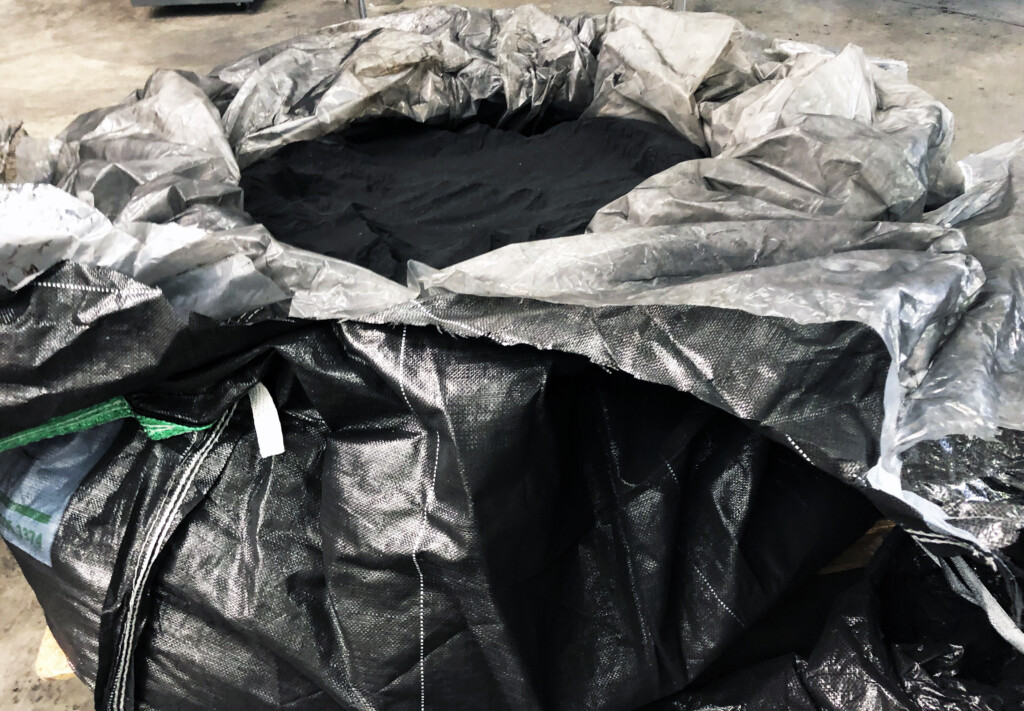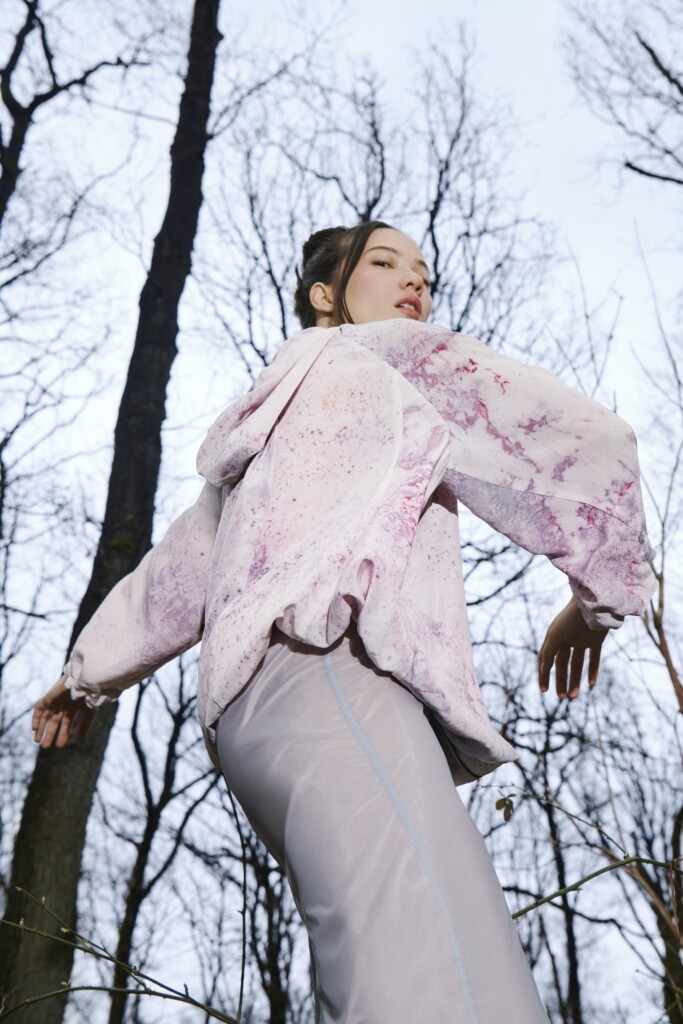
Embracing the Wildtype:
A technical smock dyed with wildtype bacteria permits limitless urban adventure.
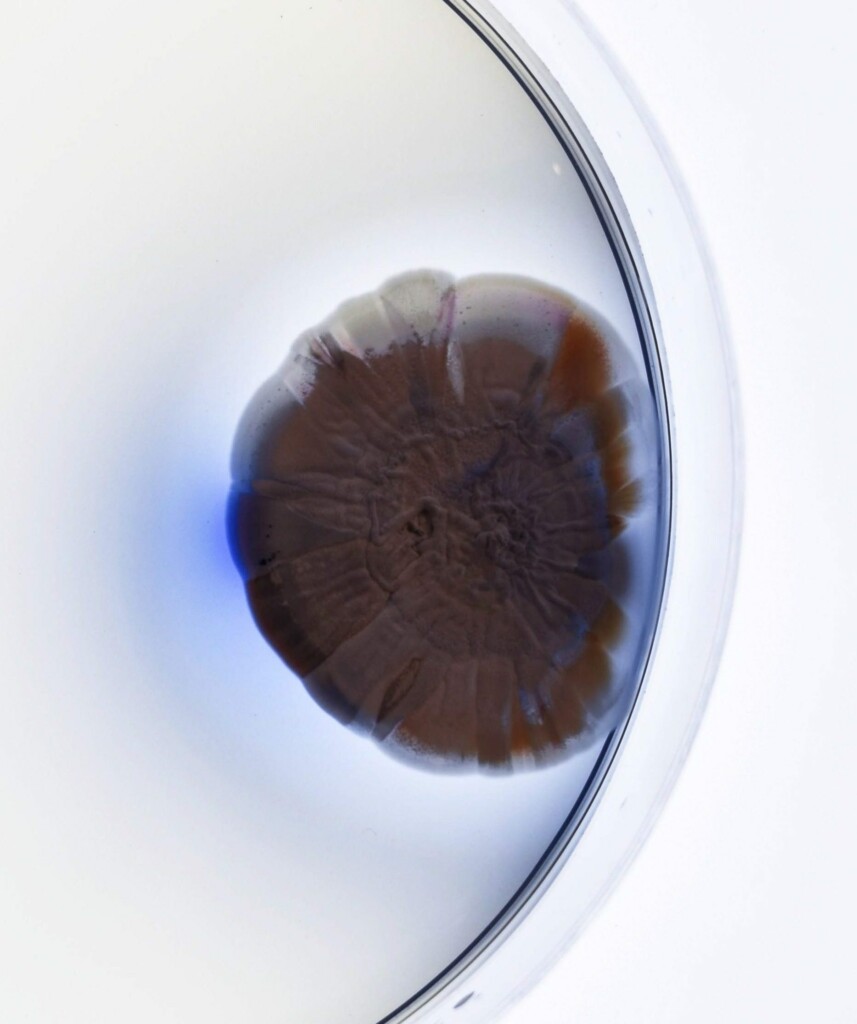
Among those 100 million bacteria will nearly always be found Streptomyces coelicolour, an Actinobacteria endemic in our soils and responsible for roughly 50% of the antibiotics, anthelmintics, anti-cancer agents and immunosuppressives currently used in clinical medicine. While just one of many soil-bound microorganisms, S. coelicolour is responsible for the ‘earthiness’ of the earth. That musky, mineral tang you can smell in the soil is the aroma of the molecule geosmin, which the bacteria secretes as it grows.
Abundant in our soils, S. coelicolour is also prolific in the lab; one of the most studied Actinobacteria and the most used by humans to produce ‘natural products’, biologically active small molecules used in all manner of contexts. Yet despite the bacteria’s constant exposure to the microscope under the watchful eye of biological scientists, S. coelicolour still has extraordinary potential yet to be fully realised.
Until recently, the “burlesque of pigments,” produced by the bacteria during the various stages of its life cycle have been overlooked, only now being used to radically reshape our broken fashion industry. Under the right conditions, S. coelicolour produces a suite of pigmented metabolites ranging in colour from blue (actinorhodin) to red (undecylprodigeosin) to yellow (coelimycin). These pigments are capable of dying textiles in a colourfast manner with just a fraction of the water needed for industrial dyeing and no additional mordants or chemicals. “It’s the definition of a natural dye,” says designer, NPOL co-founder and long-term S. coelicolour collaborator Natsai Chieza. And it could be a cornerstone of fashion’s future.
Under the name Mbeu, Chieza is exploring new models to build regenerative, circular and localised infrastructure to supply the fashion industry with bacterially-dyed textiles, a process she conceived of and refined over nearly a decade of working as designer in residence at UCL’s Department of Biochemical Engineering. The Exploring Jacket is the first product of its kind to be made using Mbeu silk.
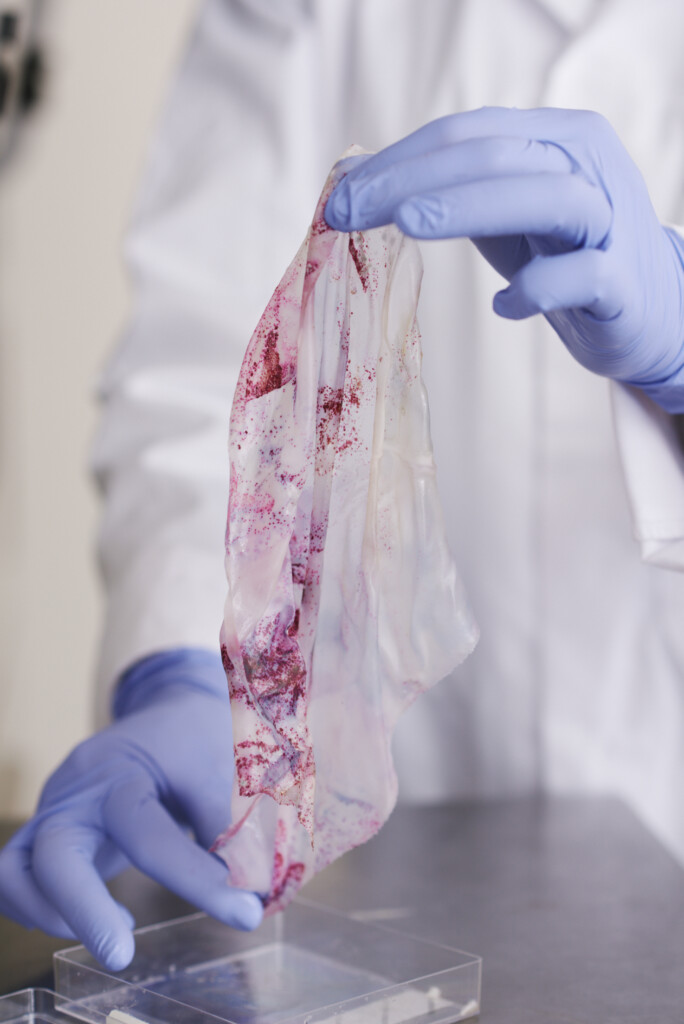
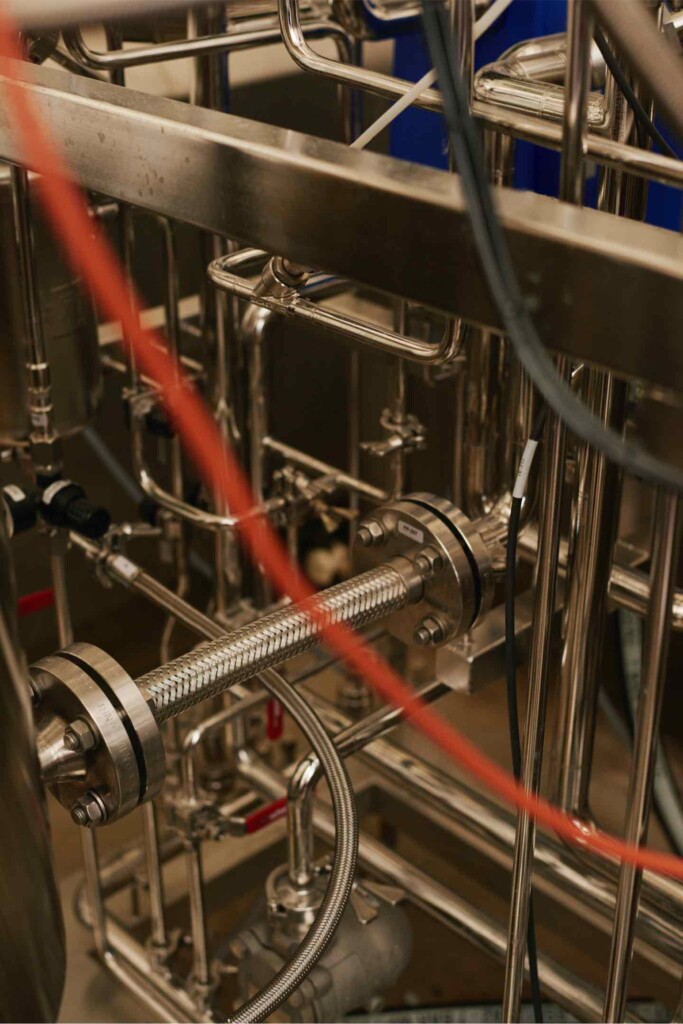
“You start to think of the textile as a matrix to support a biological living system over a set period of time, which means that what I have to design are the parameters for that growth.”
The product of a collaboration between Mbeu and fashion designer Louise Bennetts, the Exploring Jacket is built first and foremost for adventure and exploration–a silk, hooded technical smock of modular design, intended to take you to places you have no business to be, much like Chieza’s own journey into bio design.
Though initially trained as an architect before pursuing a masters in material futures, Chieza began working with microorganisms by way of collaboration with synthetic biologist, Professor John Ward. In his lab, despite having the strong sense that as a designer in the world of pure science, she didn’t quite belong, she was given free rein to experiment with a wild-type strain of the bacteria that Ward has cultured from the surface of a cactus. “I was used to being an outsider, but that teaches you to create space for yourself,” says Chieza. “I decided to immerse myself within an emergent scientific community to understand the social and technical parameters of designing living systems.”
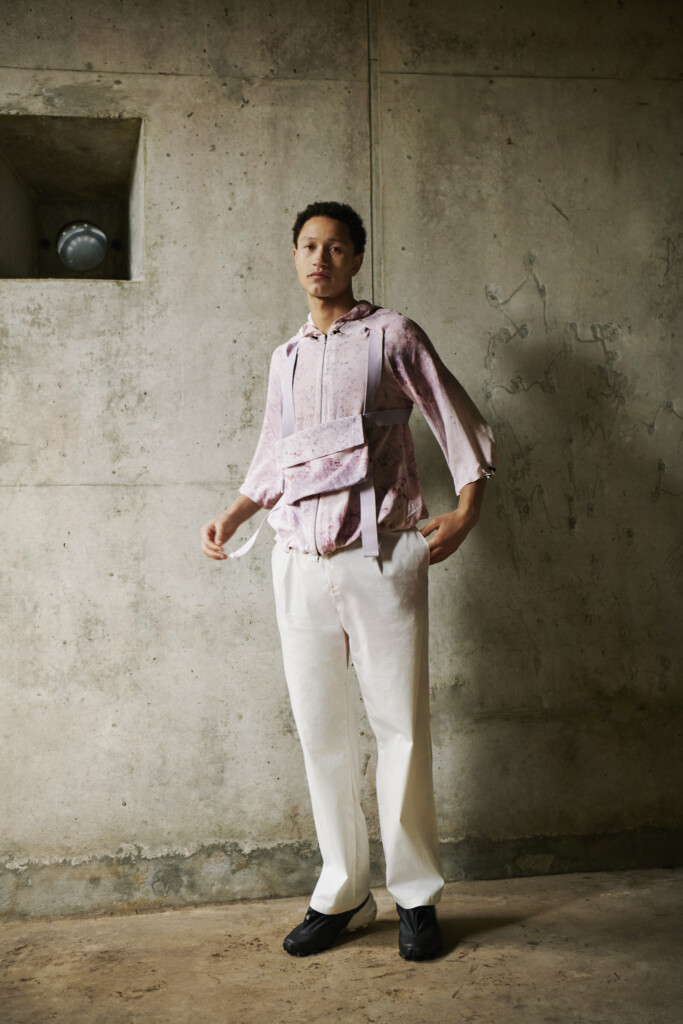
When designing with S. coelicolour, the parameters are crucial. The right conditions must be maintained to promote and guide bacterial growth. “You start to think of the textile as a matrix to support a biological living system over a set period of time,” says Chieza, “which means that what I have to design are the parameters for that growth.”
In this case the matrix is silk, “a technical fabric with a real history in the outdoors,” says Bennetts. “A super-material that used to be used for parachutes and has exceptional traceability.” Not to mention the ideal substrate on which Chieza has coaxed and cajoled S. coelicolour into showing off the best of its technicolour growth.
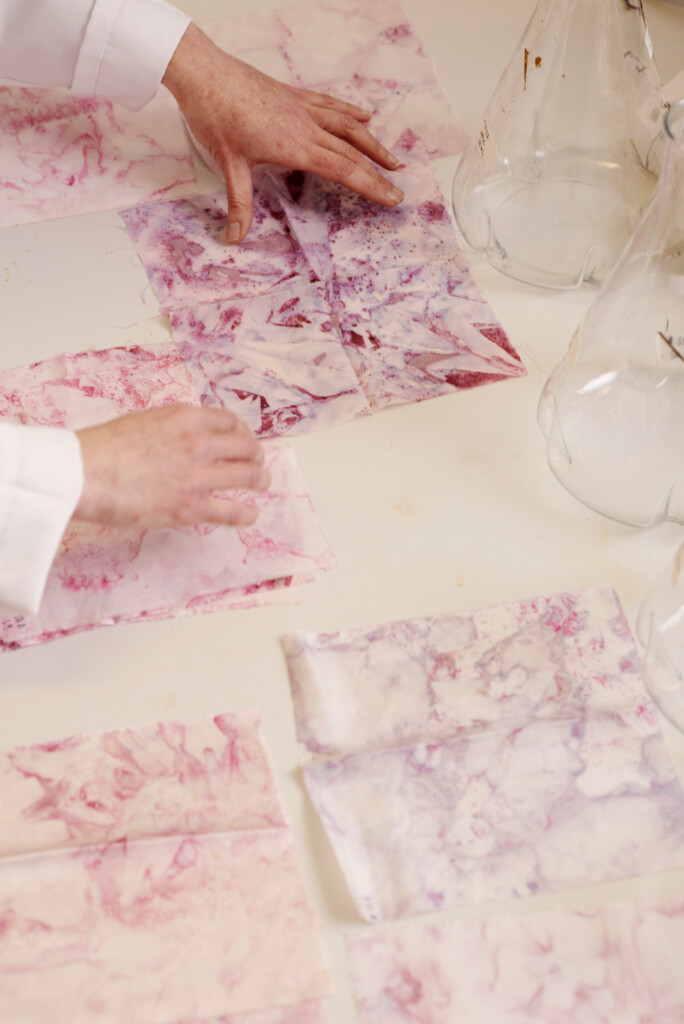
The textile is just one of numerous variables that contribute to the final quality of the dyeing process, including temperature, feedstocks and oxygenation of the bacterial culture. Fluctuations in each lead to different textural and chromatic qualities in the garment, so each piece is unique. The results are antithetical to the homogeneity of industrial dyeing, yielding a kind of bacterial couture with the fingerprints of both microorganism and designer visible in the final textile. Though “somewhat unpredictable,” says Bennetts, it’s a quality that both she and Chieza adore. “The results are astonishing.”
While the dyeing process behind Mbeu is innovative in itself, it also offers unique scope to wholly reimagine the textile supply chain. Chieza envisages a decentralised network or regional dye labs with S. coelicolour fed on stocks of local waste materials and byproducts of regional industry. “Can we train our organisms to eat coffee grounds to make pigments,” she asks, “can we use wastewater from the local wool industry? The question now is not only how we continue to scale the fermentation of the organism, but how we build the structural framework for a regenerative bioeconomy.”
